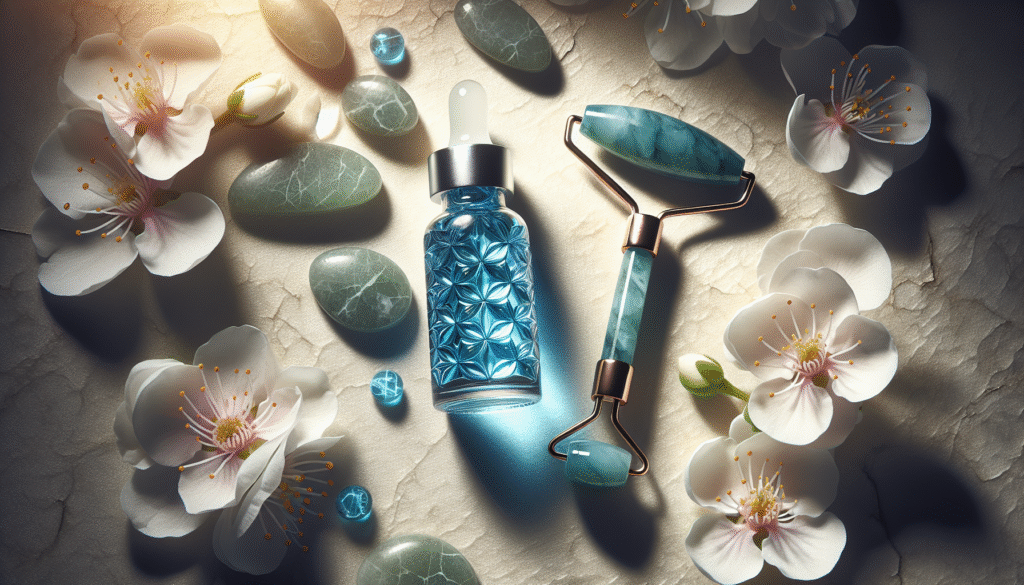
Have you ever wondered how a simple dye could transform skin texture and overall appearance? Methylene blue, traditionally used in various industrial and medical applications, has garnered attention in the skincare realm. This article investigates its potential role in improving skin texture over time, examining scientific research and anecdotal evidence to provide a comprehensive overview.
What is Methylene Blue?
Methylene blue is a synthetic dye that has been utilized for over a century in various applications, spanning from medicine to aquaculture. Originally developed as a malaria treatment and later adopted for other medical conditions, it is recognized for its ability to improve oxygen levels in the blood and its various properties, including anti-inflammatory and antioxidant effects.
The Chemical Composition and Properties of Methylene Blue
Methylene blue, or methylthioninium chloride, is a thiazine dye that presents as a deep blue solution. Its chemical structure consists of a phenothiazine core, making it capable of serving multiple functions. This compound has been shown to possess strong redox properties—meaning it can easily gain or lose electrons, which is vital in biological systems.
When considering its application in skincare, its antioxidant properties are of particular interest. Antioxidants combat oxidative stress in the skin, contributing to aging and the deterioration of skin texture. In clearer terms, by neutralizing free radicals, methylene blue could potentially support skin health over time.
The Mechanism of Action in Skin Health
Understanding how methylene blue operates at a cellular level is critical to comprehending its potential benefits for skin texture. It influences a range of biological processes.
Absorption and Penetration
For any topical treatment to be effective, it must be properly absorbed through the skin barrier. Methylene blue is known to penetrate the skin fairly efficiently. Studies suggest that once applied, it can reach the deeper layers of the skin, where it may exert significant effects on skin cells.
Antioxidant Properties
At the heart of its potential utility is methylene blue’s role as an antioxidant. By neutralizing free radicals, it helps to mitigate oxidative stress. This translates into decreased inflammation, improved skin tone, and a smoother texture.
Promotion of Cellular Respiration
Another aspect of methylene blue is its role in promoting cellular respiration. It aids in the transfer of electrons within the mitochondria, which may enhance the overall vitality of skin cells. Healthy cellular function can lead to improved texture, as skin cells are better equipped to regenerate.

Historical and Contemporary Uses of Methylene Blue
Examining the historical context of methylene blue illuminates its evolution from a medical dye to a skincare component.
Medical Applications
Traditionally, methylene blue has been employed in medical treatments. It has been used to treat methemoglobinemia, a condition wherein the blood cannot carry oxygen effectively. Its ability to improve cellular oxygenation hints at a broader potential for enhancing skin vitality through improved oxygen supply.
Methylene Blue in the Beauty Industry
Recently, the beauty industry has shown increasing interest in the properties of methylene blue. Skincare formulations now include this compound as a potential anti-aging agent. Some beauty brands have claimed that methylene blue can significantly improve skin texture and even skin tone.
The Scientific Evidence
As you consider adopting methylene blue in your skincare routine, scientific evidence is crucial. While anecdotal claims abound, research serves as the foundation for validating these assertions.
In Vitro Studies
In vitro studies involving cell cultures have indicated that methylene blue can reduce oxidative stress and inflammation in skin cells. The findings suggest that it may be effective in enhancing skin elasticity and reducing wrinkles over time.
Clinical Studies
Though research is limited, some clinical studies have explored the effects of methylene blue in dermatological applications. For instance, patients using methylene blue-based treatments reported improvements in skin texture and appearance. However, more extensive research is required to unequivocally establish these claims.

Safety and Side Effects
Before integrating methylene blue into your skincare routine, understanding the safety profile is essential.
Common Side Effects
Methylene blue is generally considered safe when used in appropriate concentrations. However, some individuals may experience skin irritation, redness, or allergic reactions. Conducting a patch test prior to full application is advisable.
Contraindications
Certain populations should exercise caution or avoid methylene blue entirely. Pregnant or nursing individuals, along with those with a history of hypersensitivity or specific medical conditions, should consult a healthcare professional before use.
How to Incorporate Methylene Blue into Your Skincare Routine
If you decide to explore the potential benefits of methylene blue, you may wonder how to incorporate it into your skincare regimen effectively.
Choosing the Right Product
Various topical formulations containing methylene blue are available, ranging from serums to creams. When selecting a product, it’s essential to consider concentrations and accompanying ingredients that enhance absorption, such as hyaluronic acid or other humectants.
Application Guidelines
To maximize its benefits, apply methylene blue products on clean, dry skin. You may choose to use it in the evening, allowing it to work overnight. Following up with a moisturizer can help lock in hydration and support skin barrier function.
Consistency is Key
Results may not be immediate. For the best outcomes, consistency is vital. incorporate methylene blue into your routine several times a week, adjusting frequency based on your skin’s response.
Potential Synergistic Ingredients
Combining methylene blue with other ingredients in your skincare arsenal could amplify its benefits. Certain compounds work particularly well alongside methylene blue.
Hyaluronic Acid
Hyaluronic acid is known for its hydrating properties. When paired with methylene blue, it can improve moisture retention, resulting in plumper, smoother skin texture.
Vitamin C
Vitamin C is another powerful antioxidant. It could complement the effects of methylene blue by providing additional protection against free radicals while promoting collagen synthesis.
Retinoids
Incorporating retinoids can improve skin texture as they stimulate cell turnover. When used alongside methylene blue, they may offer a comprehensive approach to anti-aging skincare.
User Experiences and Testimonials
Real-world experiences from individuals using methylene blue can provide insights into its practical applications and outcomes.
Positive Testimonials
Many users report noticeable improvements in skin texture, often highlighting increased smoothness and elasticity. The antioxidant properties appear to benefit those struggling with fine lines and overall skin dullness.
Cautionary Accounts
While there are positive testimonials, certain users have faced challenges, including irritation or allergic reactions. These experiences serve as reminders of the importance of patch testing and carefully monitoring your skin’s response.
Cost Considerations
Understanding the financial implications of incorporating methylene blue into your skincare regimen is worthwhile.
Price Ranges of Methylene Blue Products
Products containing methylene blue vary in price depending on brand reputation, concentration, and additional ingredients. Basic formulations may range from $20 to $50, while more advanced products can cost upwards of $100.
Cost-Effectiveness
Evaluating cost-effectiveness involves considering the long-term benefits against the investment. High-quality methylene blue products may offer substantial improvements in skin texture, potentially justifying the expense.
The Future of Methylene Blue in Skincare
As the beauty market continues to evolve, the future of methylene blue in skincare remains intriguing.
Research and Development
The ongoing research into the applications of methylene blue could open avenues for new formulations and specialized products tailored to specific skin concerns.
Consumer Awareness
With increasing consumer awareness of ingredients and their effects, the demand for scientifically backed products will likely influence the market trajectory of methylene blue in skincare.
Conclusion
You might find that methylene blue presents an intriguing option for those seeking to enhance their skin texture over time. Its established properties, coupled with emerging research, paint a promising picture. However, as with any skincare ingredient, it is essential to approach cautiously, remain informed, and listen to your skin.
Incorporating methylene blue into your routine may require patience and experimentation, but with the potential rewards of smoother, healthier skin, it might just be worth the effort. With the further studies paving the way for a deeper understanding, the conversation around methylene blue in skincare continues to expand. Hence, if you choose to embark on this journey, equip yourself with knowledge to make informed decisions, adapting your regimen to suit your skin’s unique needs.
Engaging with emerging skincare ingredients like methylene blue allows you to remain proactive about your skin health, showcasing that exploration, research, and personal experience can lead to effective and satisfying skincare solutions.